
Note: see the very bottom of this article to learn more about a short film we recently shot in Ecuador about the use of wild-harvested San Pedro. Filmed under the influence of the cactus itself.
San Pedro (Echinopsis pachanoi) is a cactus native to the Andean slopes of Ecuador and Peru. It is the South American cousin to peyote, and most notably contains the psychoactive alkaloid known as mescaline. It?s a plant I?ve been working with for over eighteen years by now, strictly in-situ in Ecuador and almost always wild-harvested. No, I do not claim to be a shaman. I?m just someone who knows a very reliable way to prepare this cactus for consumption and who has a few insights to share about its usage.
In recent years, there has seen an explosion of interest in Ayahuasca and, to a lesser extent, San Pedro. Both of these plant medicines are found in Ecuador. In fact, wild San Pedro cactus grows only a few hundred kilometers from the native range of the Ayahuasca vine and its various DMT-containing companion plants such as Chakruna. Whereas Ayahuasca and Chakruna are lowland Amazon species, San Pedro prefers the mid-elevational valleys and slopes on both sides of the Andes Mountains. In Quechua, it?s called Huachuma (also Wachuma). San Pedro is the colonial name, which I use here because it?s more commonly recognized.
Like Ayahausca, San Pedro has been used for healing purposes and to open doors in the minds and hearts of people for thousands of years. Only recently have these plants found their way to a broader audience in distant countries. Most people consume San Pedro as part of a collective ceremony, usually administered by a guide, and sometimes in a land far outside of San Pedro?s native range. I have nothing to say against that way of doing it; for many people, this method works quite well. My personal approach is different. I prefer to work with wild San Pedro that I harvest, prepare, and consume by myself. For those of you interested in exploring San Pedro in a similar fashion, here?s what I can tell you.
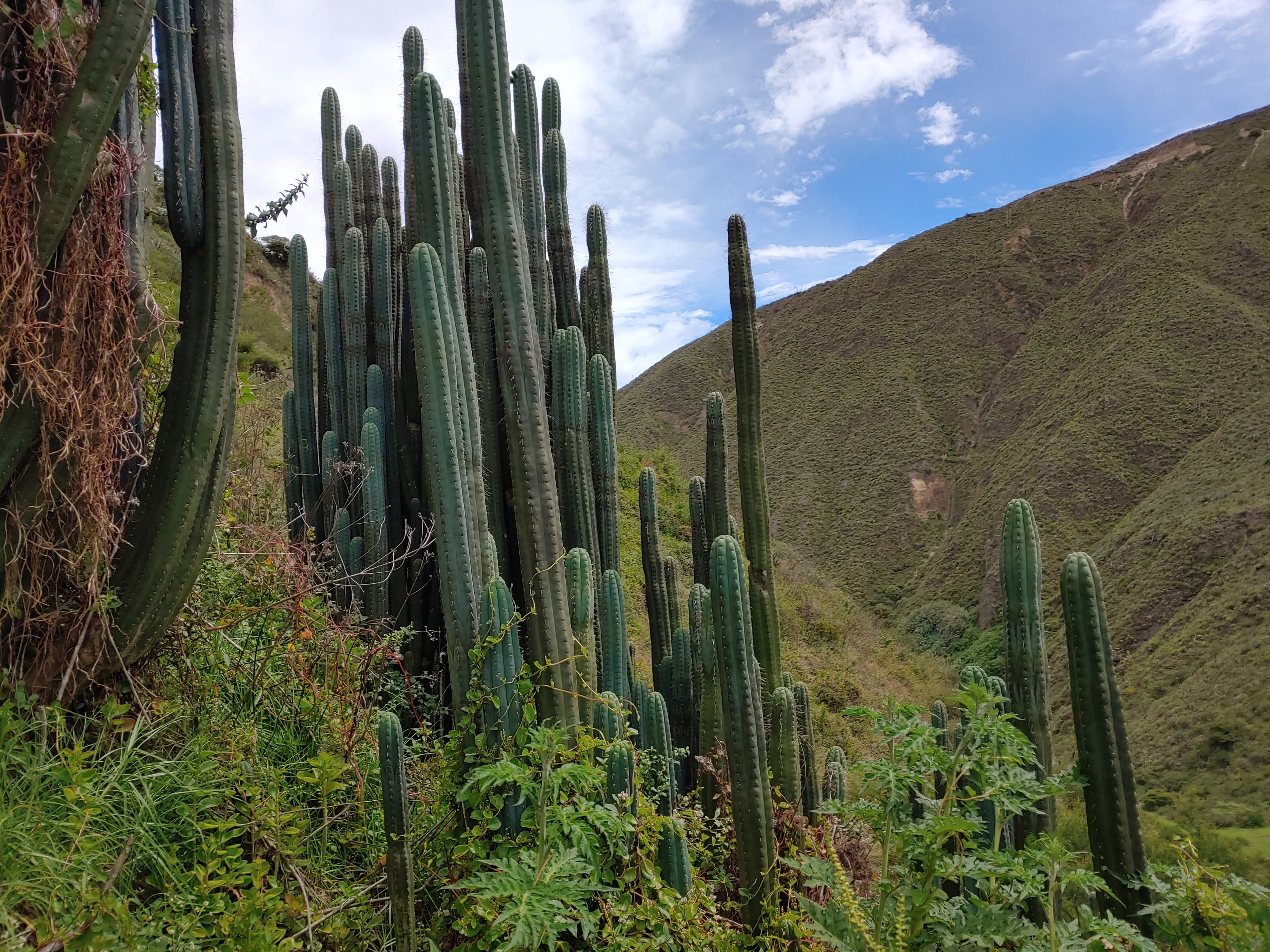 A wild San Pedro cactus I found a few hours outside of Quito, which subsequently became the star of the short film we shot under the influence of this great cactus.
A wild San Pedro cactus I found a few hours outside of Quito, which subsequently became the star of the short film we shot under the influence of this great cactus.
How to Identify San Pedro
If you wish to find San Pedro growing in the wild in Ecuador and Peru, there are plenty of places to do it, but it does take some searching. Your best bet is the eastern slope of the Andes, within the elevational range of 1,800 to 2,800 meters above sea level. In addition to San Pedro (Echinopsis pachanoi), there are a few other mescaline-containing species of cacti in the Echinopsis (syn Trichocereus) genus, most notably Peruvian Torch (Echinopsis peruviana).
Peruvian Torch looks similar to San Pedro and is also consumed ceremonially, but can produce somewhat different results ? depending on the individual cactus. The folks at Zamnesia kindly explain, ?Whereas Peyote and Peruvian Torch come on with noticeable verve, San Pedro unobtrusively envelopes. The sky doesn?t suddenly start throbbing; after watching the sky throb for an hour, you realize you are tripping balls and wonder when that happened.? Erowid, however, reports that mescaline content in Peruvian Torch tends to be lower than in San Pedro. In any event, it is safe to say that both species are psychotropic but San Pedro is generally regarded as preferable for ceremonial purposes.
Now comes the next question: how to distinguish San Pedro from Peruvian Torch? Roberto Kiesling, one of the world?s foremost cacti specialists, has this to say: generally speaking, Peruvian Torch ?is shorter in stature (2?4 meters when domesticated, but up to 5 meters in the wild),? whereas San Pedro ?is 3?6 meters when domesticated, but up to 7 meters in the wild, and its branches are not so close and parallel, but more arched.? He also writes that, generally speaking, the spines of Peruvian Torch are ?larger and stronger? than the spines of San Pedro, which in some cases are absent.
But generally speaking is the operative term. Keeper Trout, another foremost specialist on San Pedro, says that the taxonomic distinction between Peruvian Torch and San Pedro is ?at present hopelessly muddled.?
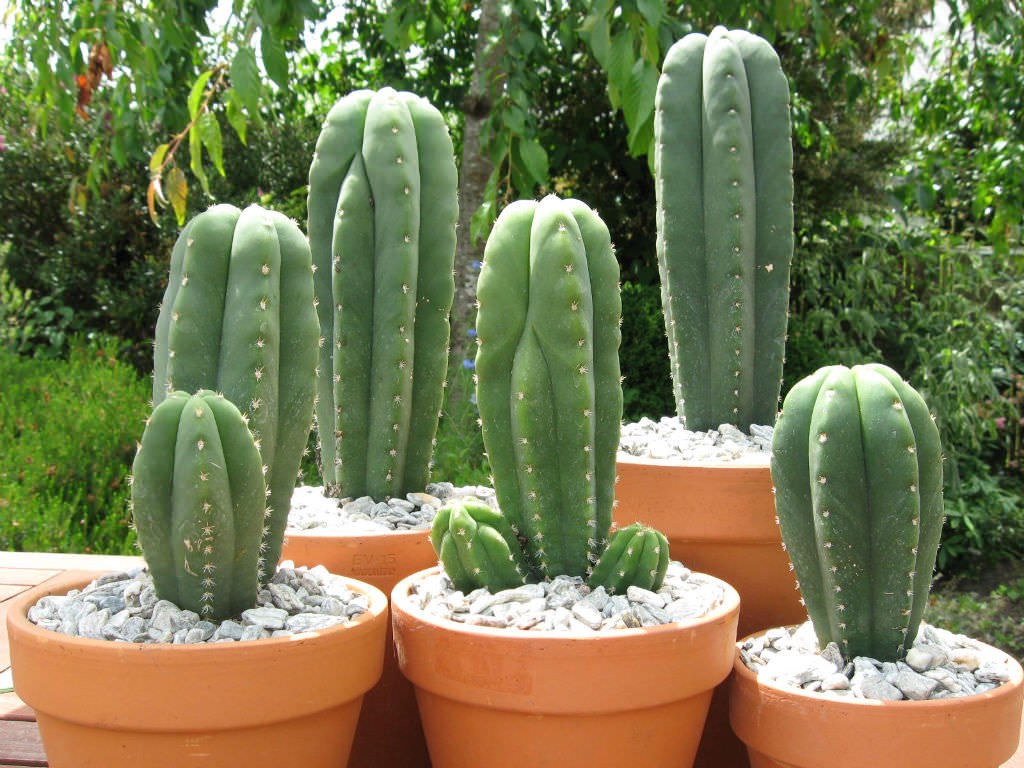 San Pedro grown in your home garden can work just as well?and it?s relatively easy to grow.
San Pedro grown in your home garden can work just as well?and it?s relatively easy to grow.
Domesticated San Pedro
This brings us to the topic of domesticated varieties of San Pedro. It bears mentioning that you don?t have to venture to Ecuador or Peru to find this cactus. San Pedro is cultivated and sold as an ornamental cactus in many parts of the U.S., and can even be grown outdoors in some of the southwestern and western states ? as far north as Colorado. It does especially well in Arizona and Southern California.
The cactus itself can be legally purchased in florist shops and tree nurseries in these regions, and it is widely grown in gardens throughout the Ecuadorian cities of Quito and Cuenca and the Peruvian city of Cusco, to name just a few. I have spoken to readers of this article who grow San Pedro outdoors in New Zealand, South Africa, and Israel.
I also know of many people who have prepared and consumed garden-grown San Pedro, with very positive results ? myself included. Consuming a San Pedro cactus that you have grown and nurtured at home can be an especially rewarding experience. It?s also probably better for the species. Wild peyote has suffered from over-harvesting in North America, and we don?t want the same thing to happen to wild San Pedro in South America.
That said, all of my earliest and most formative experiences with San Pedro have come in the wild, and this is the basis for the account that I share below.
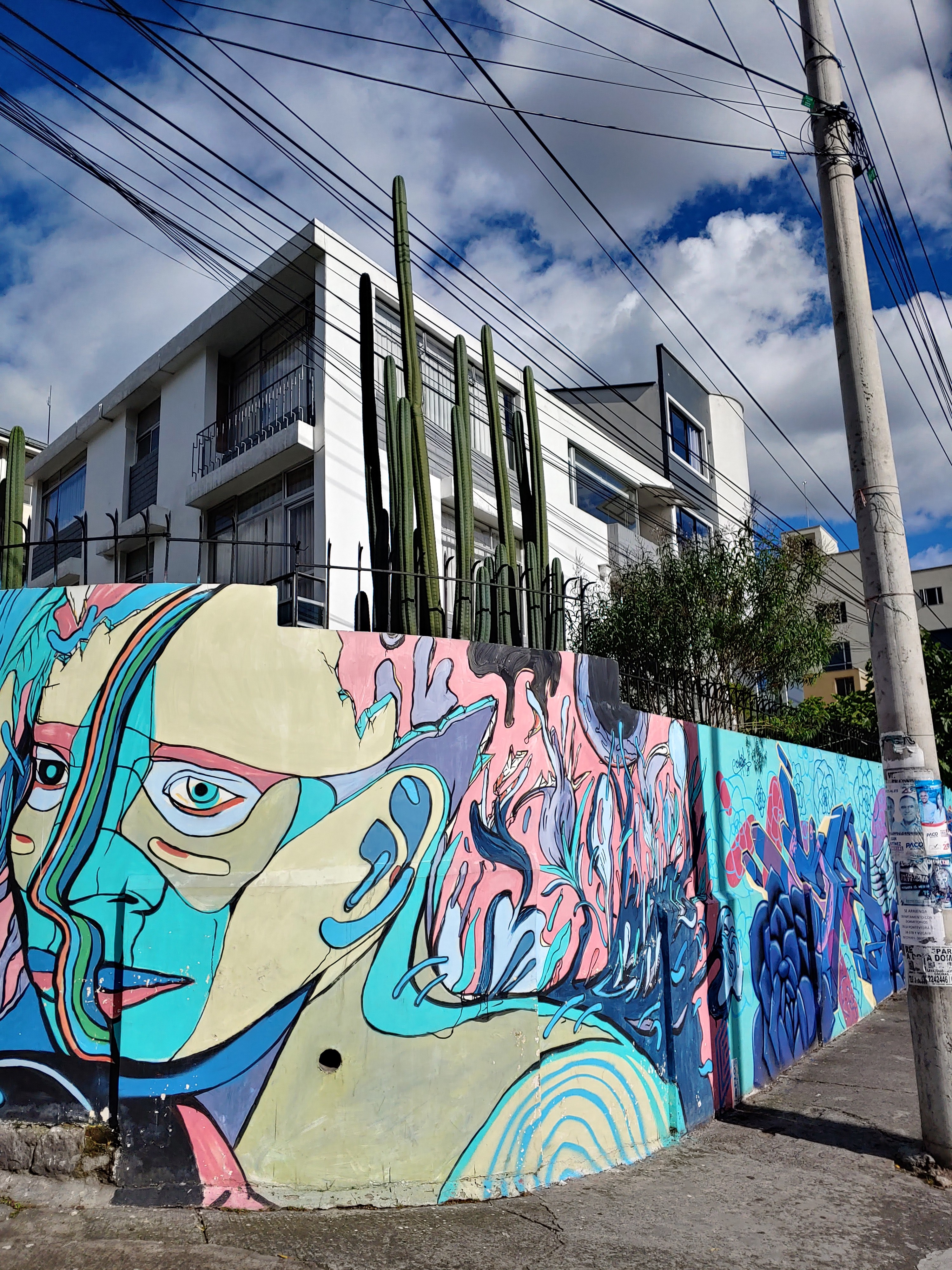 San Pedro is extremely common in Quito. This one, which I often walk past, is well over four meters in height. But I don?t recommend consuming San Pedro inside the actual city of Quito ? or any city, for that matter.
San Pedro is extremely common in Quito. This one, which I often walk past, is well over four meters in height. But I don?t recommend consuming San Pedro inside the actual city of Quito ? or any city, for that matter.
The Search
I first traveled to Ecuador in 2002 and I?ve been living there, for the most part, since 2006. The majority of my experiences with San Pedro have come from cacti harvested from a single valley in this country. The first time I did it, in 2002, I really didn?t know what I was doing. I was staying at a beach in Ecuador and I randomly met a Peace Corp volunteer who told me about San Pedro. She told me that someone explained to her the entire process, and she followed the instructions and did it by herself and it was the single greatest experience of her life. She verbally passed on these instructions to me, and the next day I left the beach and headed east across the Andes and went to the exact same place she told me to go and I did everything more or less the same way she explained to me. And everything she said was true.
My entire relationship with this woman was limited to this conversation. I didn?t write down her name or her contact information and we never stayed in touch, so I have no way of thanking her. All I have is the knowledge that was passed down to her and that I am now passing down to you. The only detail I won?t share is the name of the specific valley. But you?ll be able to figure it out if you investigate the matter further.
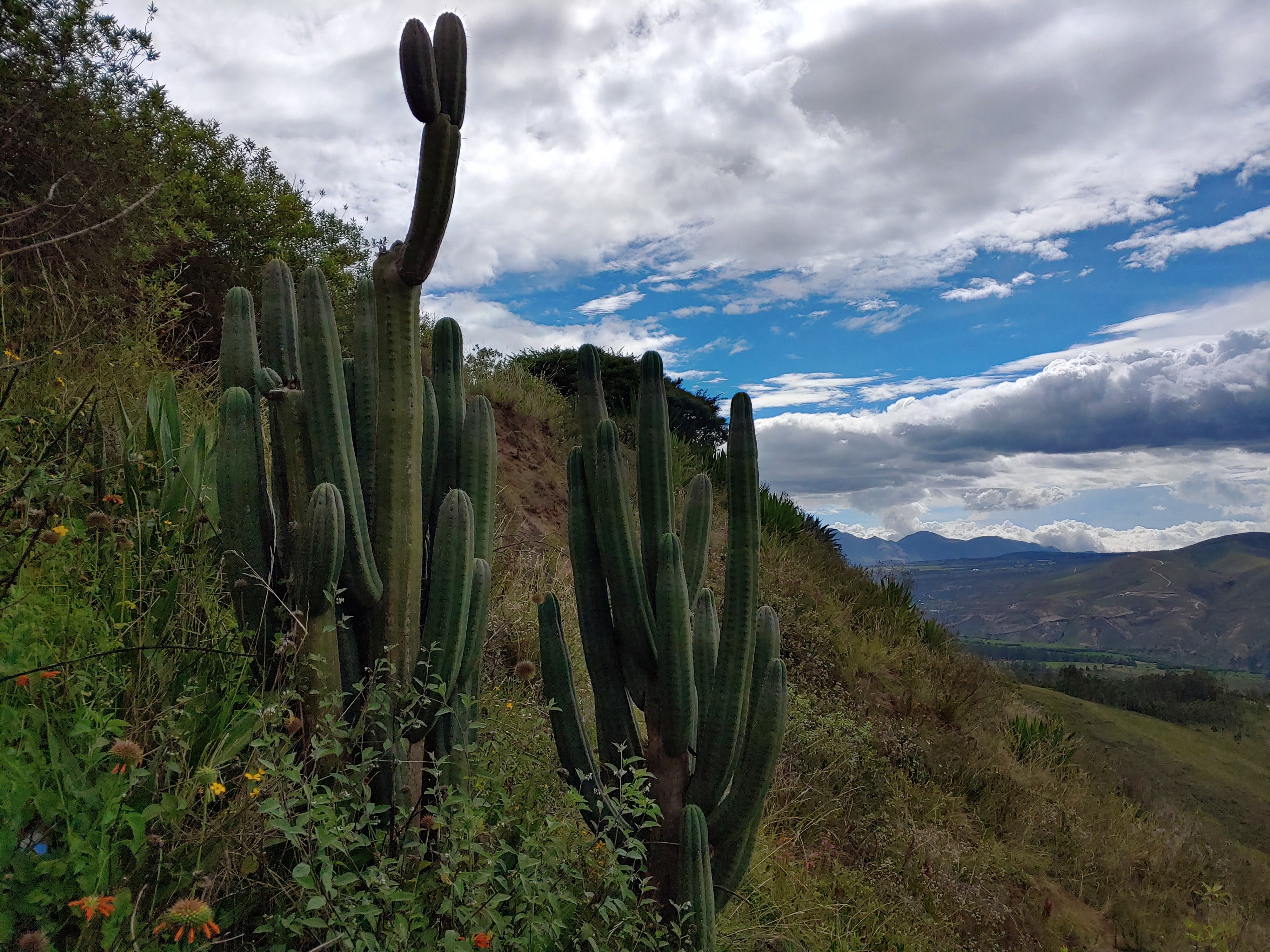 Another wild San Pedro I recently found in another valley not far from Quito. As you can see, there?s a pattern here: in the wild, it tends to grow on relatively steep xerophytic slopes. Agave plants (which you can barely see in the background of this picture) often grow nearby.
Another wild San Pedro I recently found in another valley not far from Quito. As you can see, there?s a pattern here: in the wild, it tends to grow on relatively steep xerophytic slopes. Agave plants (which you can barely see in the background of this picture) often grow nearby.
Harvesting San Pedro
Once you get to a mountain where San Pedro grows wild, give yourself an entire day for harvesting and preparation. Start by hiking up into hills in the morning, and bring a knife and a backpack. Wild San Pedro can grow to great heights for a cactus ? more than three times the height of a tall man, with as many arms as a small tribe of people. Once you find a cactus that feels right, it is customary to first ask permission to harvest one of its arms. It?s a cactus, so it won?t answer you in human language. But I feel like the asking is important. The same applies when harvesting home-grown San Pedro.
Choose an arm that is at least the size of your own forearm, as measured from your elbow to the end of your balled-up fist, and roughly the same girth. I personally err on the side of slightly larger than this. It?s better to make too much than too little, because you can monitor your dosage as the trip progresses.
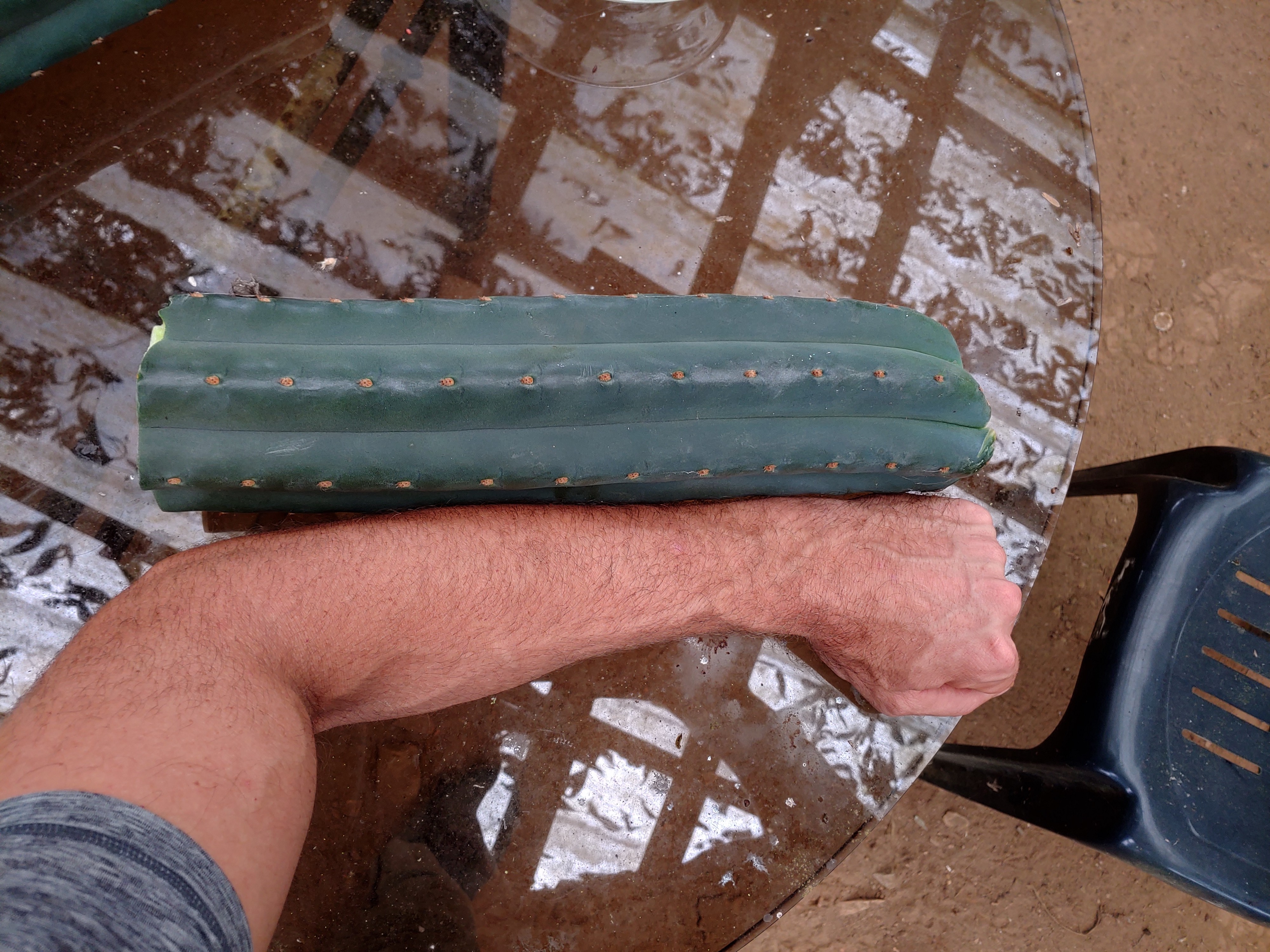 This is a moderate dose. For my last solo ceremony, I used this piece plus another piece about half this length, and cumulatively it was the right amount.
This is a moderate dose. For my last solo ceremony, I used this piece plus another piece about half this length, and cumulatively it was the right amount.
Preparing the Cactus
Put the piece of cactus in your backpack and hike back down to wherever you are lodging. Ideally, you?ll want to lodge in a place where you have free reign of the kitchen for about eight hours. That?s the time it will take you to prepare the cactus and boil it down. The only equipment you need is a knife, a stove or fire pit, a pot, water, and a strainer. Anyone can do it.
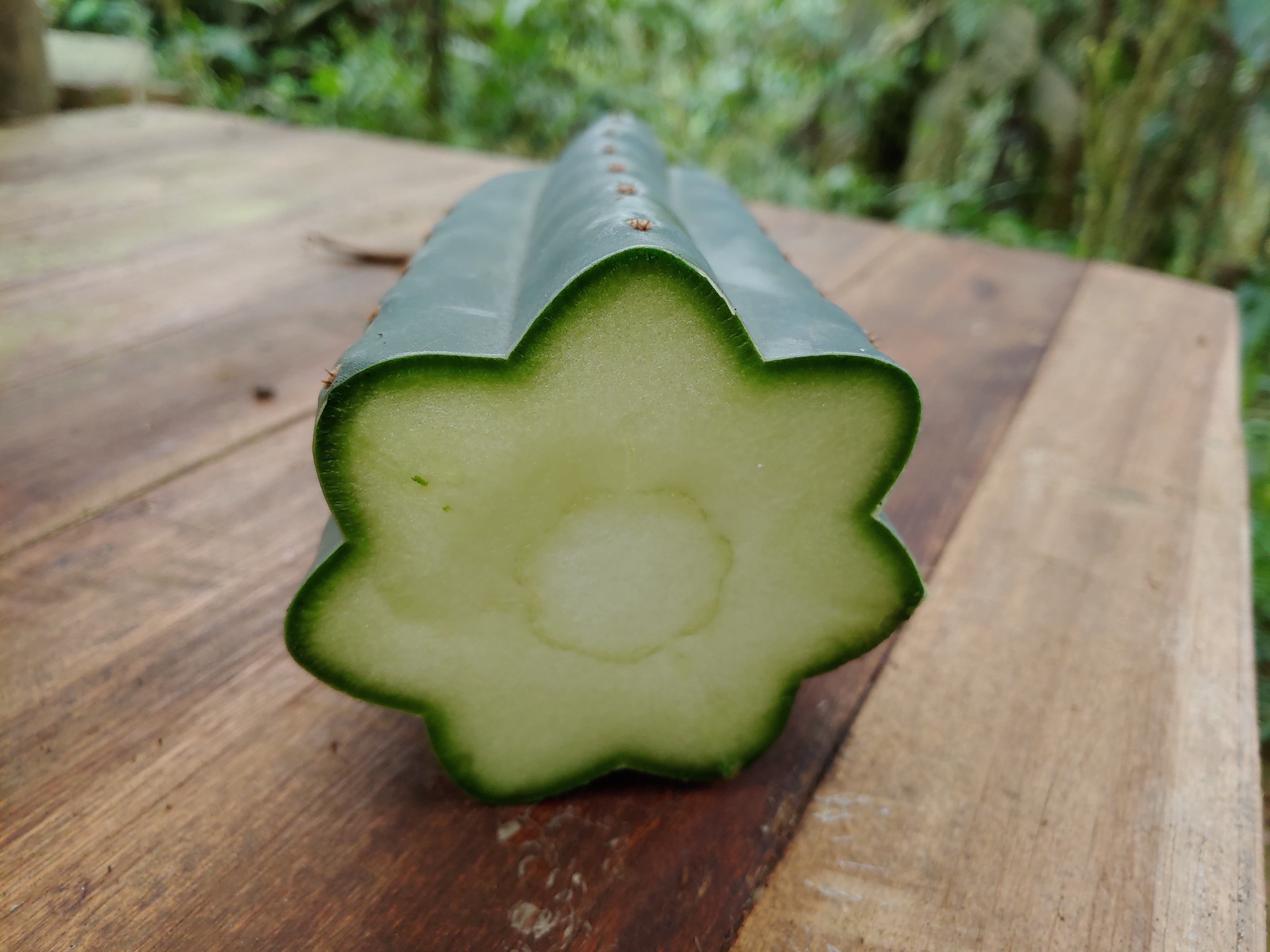 The outermost layer is translucent, and somewhat waxy. Think of it as the skin of the cactus. The green layer immediately beneath the skin is where the mescaline is concentrated ? this is the flesh. The white pulp below the flesh is best avoided because it only contains a marginal amount of mescaline and tends to cause nausea.
The outermost layer is translucent, and somewhat waxy. Think of it as the skin of the cactus. The green layer immediately beneath the skin is where the mescaline is concentrated ? this is the flesh. The white pulp below the flesh is best avoided because it only contains a marginal amount of mescaline and tends to cause nausea.
The first step is to remove the spines from the cactus. Use the tip of a small knife for this. Remove each spine, one by one, and discard them. (If you?re lazy, you can skip this step, without much detriment to the final brew.) The second step is to remove the thin, semi-translucent waxen layer of skin that encases the cactus. It?s almost like removing dead skin that?s starting to peel after a sunburn ? which I say only to illustrate how thin this layer is and also how it is best removed. Use a knife to get under this thin layer and peel it off. You don?t need this for your brew, so you can return it to the land.
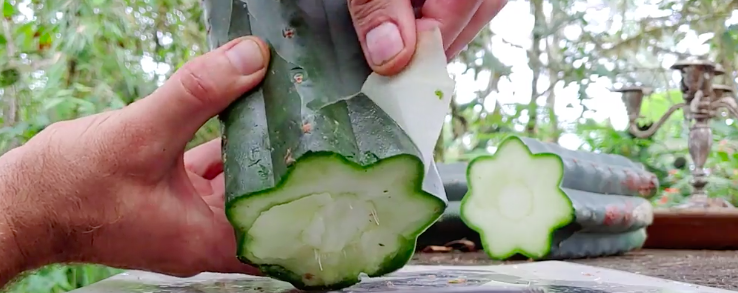 The translucent skin can often be removed by hand, revealing a layer of wet, dark green flesh beneath it. That?s the part you want to extract.
The translucent skin can often be removed by hand, revealing a layer of wet, dark green flesh beneath it. That?s the part you want to extract.
Once the waxy skin is removed, a layer of wet green flesh will be fully exposed ? and this is what you want. This layer of green flesh only extends a few millimeters deep. Below the green flesh is a layer of white pulp. Use a knife to remove the green layer, but not the white layer. Inevitably, some of your green cuttings will include some of the white pulp, and this is okay. The white pulp won?t hurt you, but it may add to the nausea. Almost all of the mescaline is stored in the green flesh, so this is what you?re after. Try not to miss any of the green ? you want all of it.
 The goal is to try to extract as much green as possible, without dipping into the white, but it doesn?t need to be perfect. Just do your best. It?s inevitable that some of the white pulp will make it into your brew.
The goal is to try to extract as much green as possible, without dipping into the white, but it doesn?t need to be perfect. Just do your best. It?s inevitable that some of the white pulp will make it into your brew.
By the end of this process, you will have a bowl full of green slices of cactus. Imagine if you were shaving the external part of a carrot, but instead of using a vegetable peeler, you use a knife, and thus your shavings are slightly thicker. That?s pretty much what the green shavings will look like, in terms of their size and width.
 The green shavings (in the clay bowl to the left) go into the pot to boil. Everything else is returned to the earth.
The green shavings (in the clay bowl to the left) go into the pot to boil. Everything else is returned to the earth.
San Pedro Tea
Put these shavings into a big pot with about three liters of water, and put this pot over a medium flame. After three to four hours, you will have about one cup of green liquid ? about 250 ml. Pour this concoction through a strainer and let the liquid cool.
But you?re not done yet! Put the cactus shavings back into the pot and add another two liters of water, and do a second boiling. For the second boiling, I always only do it for two hours, and this has always worked. Once the two hours are up, pour the liquid through a strainer and mix it with the first batch of liquid. After a combined five to six hours of boiling, I usually end up with approximately 400 ml of green liquid in total. During my most recent ceremony, I boiled it down until I had a total of about 300 ml. It helps to reduce the liquid as much as possible, because less volume means that it?s quicker to drink. It also means that your stomach will be loaded down with less water during your trip, which helps reduce the chances of nausea. In summary: aim for 250?500 ml of concentrated liquid at the end of boiling.
Warning: You will need to be very vigilant toward the end of each boiling cycle. If you fall asleep on the job, you may accidentally boil off all of the liquid, effectively ruining the whole process. It takes about three hours to reduce three liters of water to 500 ml. If you want to play it safe, turn off the flame at that point and pour it through a strainer, to see how much liquid is left. If it?s 500 ml or more, return it to the pot and continue boiling a little bit longer, until it?s only 250 ml (i.e., one cup). If it?s already around one cup, then stop there, store the liquid in a container, and begin the second boiling.
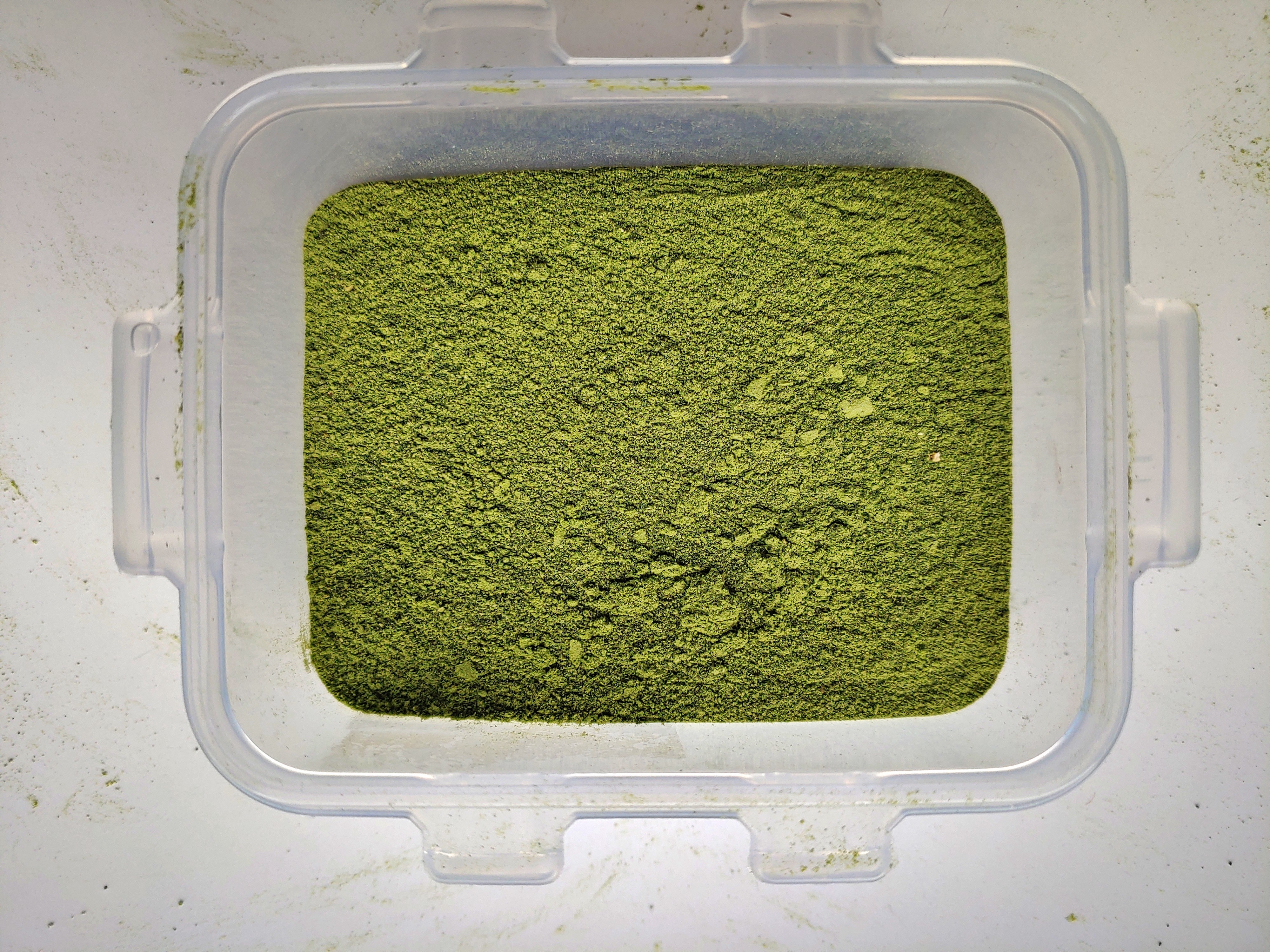 One arms-length piece of cactus dehydrated and pulverized into 20 grams of pure green(ish) powder.
One arms-length piece of cactus dehydrated and pulverized into 20 grams of pure green(ish) powder.
Alternative Preparation Methods
Making ?tea? is not the only way to prepare San Pedro. There?s one technique that employs a blender and another technique that involves drying the green flesh and grinding it into a powder. All of the above work, but the method I use has worked so perfectly for me, every single time, that I see no need to deviate from it even to the slightest degree. The blender technique, on the other hand, seems to provoke more nausea, probably because more of the white pulp makes its way into the final brew. Recently I?ve been experimenting with the drying method, with good results. You can learn more about that process in my article Macro-Dosing Mescaline: The danger of not consuming enough San Pedro.
Set and Setting
Once I?ve finished boiling down the potion, I let this sit overnight. I eat a light, healthy dinner and get a good night?s sleep. The journey will begin the following morning.
This brings us to the matter of set and setting. It is absolutely imperative to choose a beautiful, peaceful, and secluded place outside. You?re basically going to spend the entire day making love with the natural world, so choose this place very wisely. You want it to be a place where it?s comfortable to do things like lie down on the ground and kiss flowers and stuff (seriously). It?s okay to have a house or hut or tent nearby, to serve as home-base during the more reflective second half of the experience. But even your shelter should feel open and connected to the outside. In my opinion, consuming San Pedro in an urban and/or indoor environment is a terrible idea and I strongly advise against this.
I would also advise against doing it in a public park. You?ll want to choose a place where you?ll be alone or in the company of only those people who you intend to do this with. You will not want to interact with any random people during the entire process, nor will you want them to be looking at you while you?re staring intently at tree bark, etc.
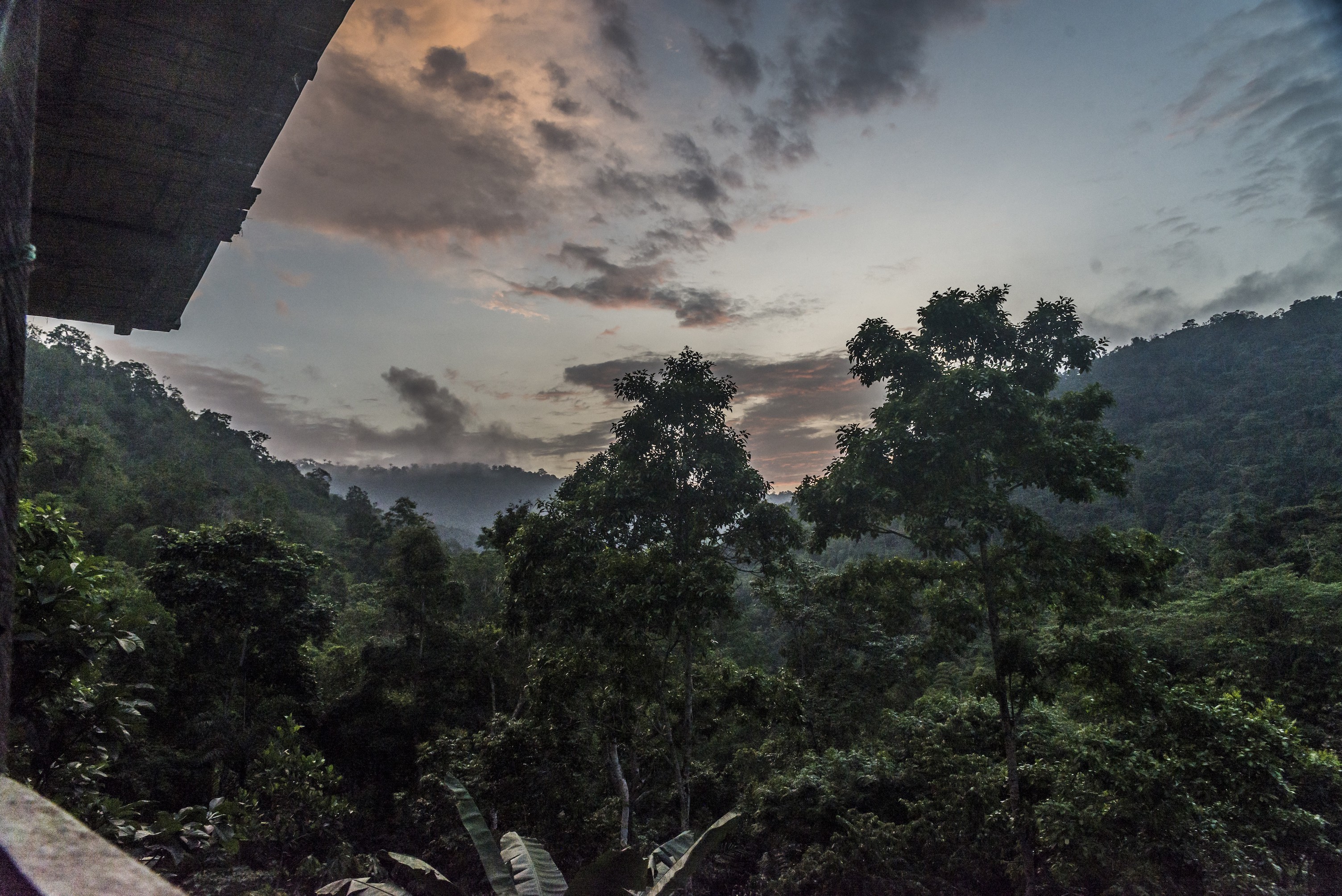 View from the Bamboo House in the Jama-Coaque Reserve in Ecuador. The creation of this rainforest preserve was in inspired by a San Pedro journey. It subsequently served as the primary location for the San Pedro-based film ?Kissing Gaia.?
View from the Bamboo House in the Jama-Coaque Reserve in Ecuador. The creation of this rainforest preserve was in inspired by a San Pedro journey. It subsequently served as the primary location for the San Pedro-based film ?Kissing Gaia.?
Solo Journey vs Guided Ceremonies
I?ve done most of my San Pedro experiences by myself, which was ideal (for me). One time I did it with one other person, and this was also a very special experience. However, I?ve never done it with a group or with a guide/shaman. A couple of times I?ve been invited to do it with a guide, but I always end up turning it down. I?m sure it would still be a positive experience, and for some people, a guide is probably the better way to do it. So I?m certainly not recommending against the use of a guide. Over the years I?ve just developed my own process and it?s always worked so well that I just don?t see any need to change it. It?s a personal decision.
The subject of ceremonies is an interesting one. Although I?ve never participated in a San Pedro ceremony, I have participated in numerous Ayahuasca and other plant medicine ceremonies. In the case of Ayahuasca, I do believe that a group setting and a proper guide is important.
For one, Ayahuasca is inherently less predictable than San Pedro. Ayahuasca is comprised of at least two psychoactive plants, if not three or four ? all of which exert a different quality of experience. Although mescaline potency can vary among San Pedro cacti, the brew is limited to only one component: the flesh of the cactus. This means that San Pedro is a lot harder to screw up ? less can go wrong.
I do believe that ceremony, in its most fundamental sense, is important. But I question the necessity of orthodox group-based ceremonies in all circumstances. It brings to mind the difference between Church and spirituality. Can spirituality be experienced inside the interior of Church, while a man sings to you from the pulpit? Yes, for some people it can. But spirituality is certainly not limited to the Church, and for some people it is more easily accessed alone. The minimum number of people required for a ceremony of any kind is one.
Pre-Journey Purification
I?ve never observed a strict regimen of dietary restriction before consuming San Pedro. It?s not a bad idea, and if you are inclined toward fasting/dietas, I would recommend it, but it?s not necessary. At the very least, be mindful of what you eat the day before. Also, be sure to properly hydrate yourself the day before. During the journey itself, you don?t want a stomach full of water, especially in the morning, but don?t dehydrate yourself either.
With San Pedro, I think the most important component of preparation is what you put into your head during the days before your journey. The best way to fast before San Pedro is to reduce or even eliminate screen time and exposure to media, preferably for several days. Try to go to your chosen place a few days ahead of time, and allow your internal rhythm to gradually slow down to a similar frequency as the land around you. You can also use that time to shape your intentions. Quickly jumping from everyday life into a San Pedro experience is not wise.
 This is about 2/3 of a dose here, circa 8:30am. I had already consumed the first 1/3.
This is about 2/3 of a dose here, circa 8:30am. I had already consumed the first 1/3.
Timeline of a Journey
Another distinction between the San Pedro and Ayahuasca process is the timing. Whereas Ayahuasca is almost exclusively consumed at night, most people prefer to consume San Pedro in the morning, and I strongly agree. It?s a 16-hour experience, and you will want to spend much of that time communing with the natural world during daylight.
On the morning of the trip, I typically wake up around 7am and eat an extremely light breakfast, mostly of fruit. About an hour later, at around 8am, I drink the first installment of the liquid. San Pedro does not taste nearly as disagreeable as Ayahuasca, but it doesn?t taste good. To help it go down, you can try mixing it with some honey or home-squeezed orange juice and chug it. I also don?t drink it all at once. I usually break it up into three installments. At 8am, I drink half of it, and then give my stomach about a half-hour to adapt. Then I drink another quarter and wait.
Sometimes it takes a long time for mescaline to come on. There is a funny line in ?Fear and Loathing in Las Vegas? about this, although I assume Hunter S. Thompson was referring to synthetic mescaline. He certainly wasn?t drinking a wild-harvested San Pedro potion. But the comment rings true.
In any event, don?t worry ? it will definitely work. Just be patient. For the first hour or two, you will feel the machinations of strong medicine in your stomach and throughout your body. I?ve never purged from San Pedro, but it certainly has been known to happen. I always feel some light nausea and something akin to the restlessness that can be felt shortly after consuming psilocybin mushrooms. But also there is this very interesting sensation that something truly extraordinary is about to happen. Try to focus on that side of it, rather than the light nausea. It?s not that bad.
After almost two hours, it starts to come on, and this is a glorious feeling. Once it has started and I feel confident that it?s going well, this is when I usually drink the last quarter of the brew. I have never declined to drink the entire brew? I always end up drinking all of the liquid that I?ve prepared. I?ve also never felt like I didn?t have enough. The dosage has always been perfectly spot-on, without exception ? which is somewhat rare, in the annals of psychedelic exploration.
For the next four or five hours, you will be ?peaking,? as they say. Even at the peak, I have always found it to be a very manageable and wonderfully positive experience. This is not the case with some guided San Pedro ceremonies that I?ve heard about. I?ve spoken with a few people who felt that San Pedro was too intense for them, and others who said that it was too weak. Using the method of preparation I outlined above, I?ve never had a negative or an overly-intense experience with San Pedro. I have had a few unnervingly intense moments with Ayahuasca, but never with San Pedro. I?ve shared my personal perspective on the Ayahuasca experience as it compares (and contrasts) to the San Pedro experience in this article.
The Experience
The shamanic/plant medicine community likes to refer to Ayahuasca as the grandmother, whereas San Pedro is said to have more of a masculine energy. I don?t entirely agree with this conception of San Pedro. If San Pedro (i.e., Saint Peter, to use the Christianized term adapted to a non-Christian spiritual tradition) is meant to represent the masculine side of the energy spectrum, I would describe it as a very gentle grandfather, compared to the tough-love grandmother that is Ayahuasca. But this is just me (and all of us) trying to put an extremely complex process into a tidy little box. I feel like a day spent with San Pedro is like a day spent in the arms of Mother Earth, pressed closely to her bosom?or something like that. Obviously these are all imperfect analogies aimed at describing something ineffable.
My point is that there is no need to fear the San Pedro experience, which distinguishes it from the Ayahuasca experience. Ayahuasca has employed a wide range of methods to teach me what I need to be taught, and some of those methods were sweet and some of them were forceful. In fact, one of the greatest lessons that Ayahuasca can offer is precisely on the subject of Fear itself and how to overcome it. It does this by simulating Fear while simultaneously giving you the tools to go inside Fear and demystify it ? a therapeutically genius tactic, in many ways.
San Pedro does not work this way. It will infuse you with some of the most important messages you will ever receive during your time in this life, but it does so with an infinitely soft and gentle voice. San Pedro prefers to communicate truth through beauty. Beauty and the laws of the natural world comprise its language, and these are infused with an indescribable sense of joy that persists throughout the entire day.
The San Pedro joy is not merely a frivolous feel-good joy ? although it certainly does feel good. Rather, it is a deeply-penetrating joy with connective power. For a few hours particularly during the peak, you will probably feel pulled towards the ground. You will want to lie down on the earth and look up at the clouds and at the veins in your hands and at rocks and bugs and any other manifestation of the physical universe, and all of these elements will impress upon you the same understanding. You will feel things just as much as you see them, and everything seems to be the bearer of essential truths that you?ve forgotten and needed to be reminded of.
I?ve never covered my eyes with eye-shades during the San Pedro experience, and frankly I can?t imagine wanting to do that for any great length of time. Once again, I am biased in favor of my own personal methods, and I?m sure the eye-shades-on-a-couch-with-music approach also has its virtues. It just seems to me a squandered opportunity. Your powers of vision are never so acute as they are with San Pedro, and I think it would be a shame to deprive yourself of this element of the experience. (Note to ophthalmology and vision researchers: the short-term enhancement of visual acuity caused by mescaline may be something worth exploring).
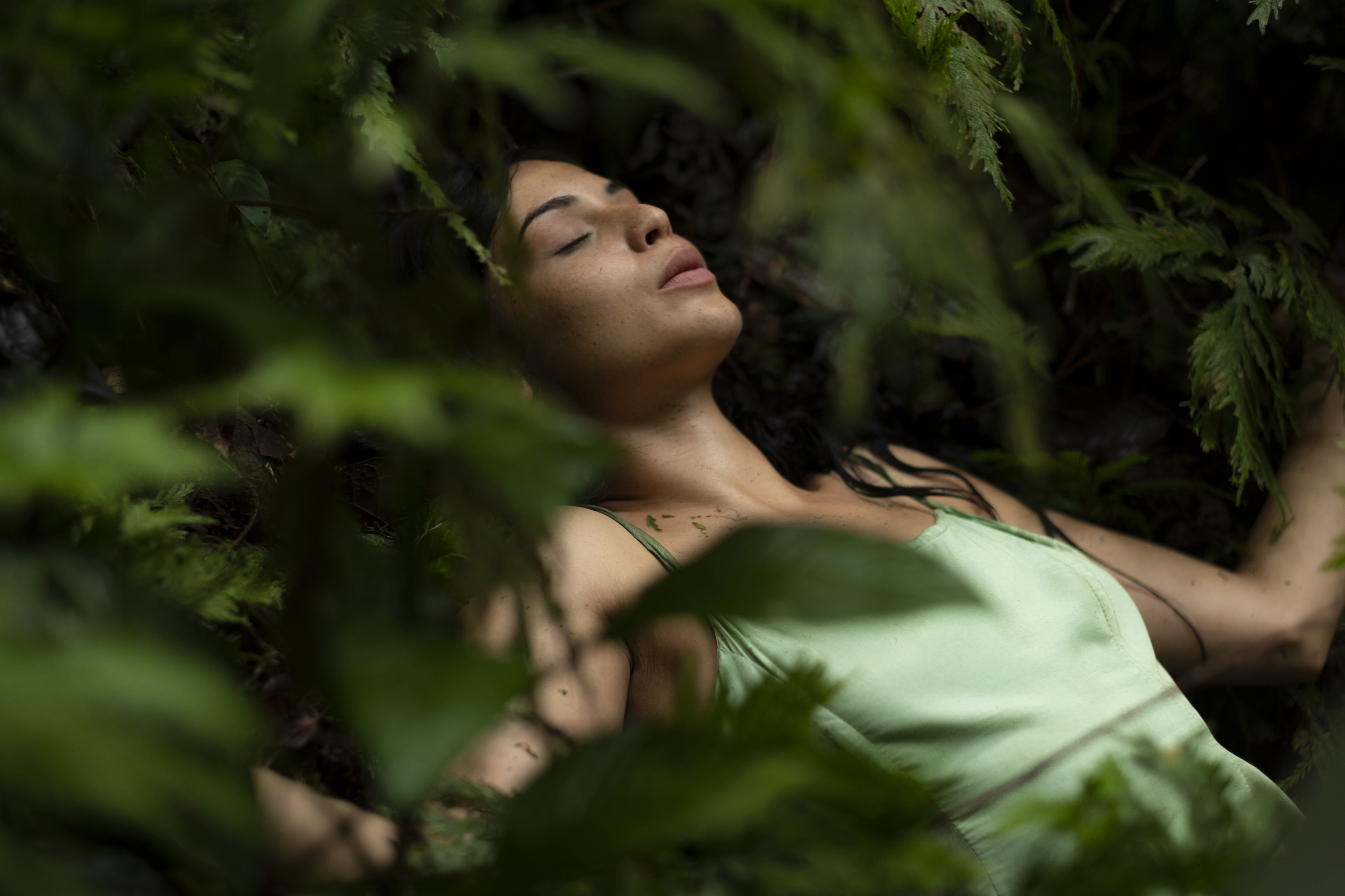 Nabilia Ganem in ?San Pedro Huachuma Echinopsis Pachanoi,? filmed under the influence of San Pedro. See below for details.
Nabilia Ganem in ?San Pedro Huachuma Echinopsis Pachanoi,? filmed under the influence of San Pedro. See below for details.
The Reflective Phase
By the time mid-afternoon very slowly rolls around (although of course time will have an entirely different meaning), you will probably want to sit up and maybe even walk around and explore the woods and streams a bit, or you?ll be content to mosey around the garden. Then a few hours later, when the sun starts to get low, you?ll enter into the very long and productive backend of the journey, whereupon your task now is to assimilate the flood of sensations and revelations that you just experienced and are continuing to experience.
Even when night comes, the journey will still not be over. For me, this is usually the phase in which I feel a burst of forward-looking wisdom. It is an opportunity to refine your direction in life, to set a new course or simply to fine-tune it. If ever there is a time to establish intentions for the coming year or for your entire life, this is it.
If you?re wise, you have chosen a night with a good moon, and if you?re lucky, the sky is clear. For some reason around midnight, I always end up going for a walk in the moonlight. What I do on these walks, more than anything is bask in a sense of gratitude for not only this blessed day that I have just lived, but for the opportunity to exist as a part of this whole thing.
I?ve noticed that bedtime usually comes around 2am. This is a full 16 hours after the moment that the cactus is first taken into the body. There is an arc to the experience, which rises and hangs in the heights and then very gradually and peacefully falls. The next morning you wake up and begin the rest of your life.
A Tool for Life
I usually only undertake a full San Pedro journey about once every few years. I don?t feel the need to do it more frequently than that. I would also say that the most important trip was the very first one. Once you have spent a day with Huachuma, all the power of it never really leaves you. For example, I credit this cactus with convincing me to make rainforest conservation part of my life?s work, which I am still carrying on to this day. There is currently a 1,600-acre rainforest preserve in Ecuador that was born from my second San Pedro experience. Likewise San Pedro is the reason that I?m not particularly scared of dying, and it?s also one of the reasons that I?m happy to be alive.
San Pedro is probably not for everyone, and anyone who follows these instructions will surely have an experience that is different from the experiences that I?ve had. This is just one person?s account of a human being?s relationship with a legitimately magical cactus and the mystical experience that it has the capacity to unlock. I hope there is someone out there who finds this useful.
Cultivating San Pedro
If you?re going to harvest the arm of a San Pedro cactus ? especially if its a wild one ? you can repay the favor by vegetatively propagating (i.e., cultivating) a baby San Pedro cactus. At first glance, this is easy? all you need to do is put a cutting of the cactus into the soil, either in a pot or in the ground (depending on where you live). However, there are two very important tricks to this process.
- Be sure to give the wound (the cut surface) at least 2?3 weeks to ?cure? (dry over) before planting it in soil. Otherwise it may rot.
- Do not water it for the first 3?4 weeks, which may seem counter-intuitive. The cutting prefers to live off of its own internal moisture for the first few weeks before additional water is required. Otherwise ? again ? it may rot.
A Youtube channel called San Pedro Mastery has several excellent tutorials on how to cultivate San Pedro at home, including an especially helpful video on the 10 most common mistakes people often make when cultivating San Pedro.
Sourcing San Pedro: If you live in the US, the best place to legally purchase San Pedro plants and cuttings online is here. All of their cuttings come from old-growth San Pedro cacti that are grown on-premise. AWCO has been working with San Pedro for decades.
The Legal Issue: In most countries, San Pedro is legal to purchase from a plant nursery and cultivate in your garden, but it?s illegal to prepare and consume. This also applies to the US. Just be mindful of this.
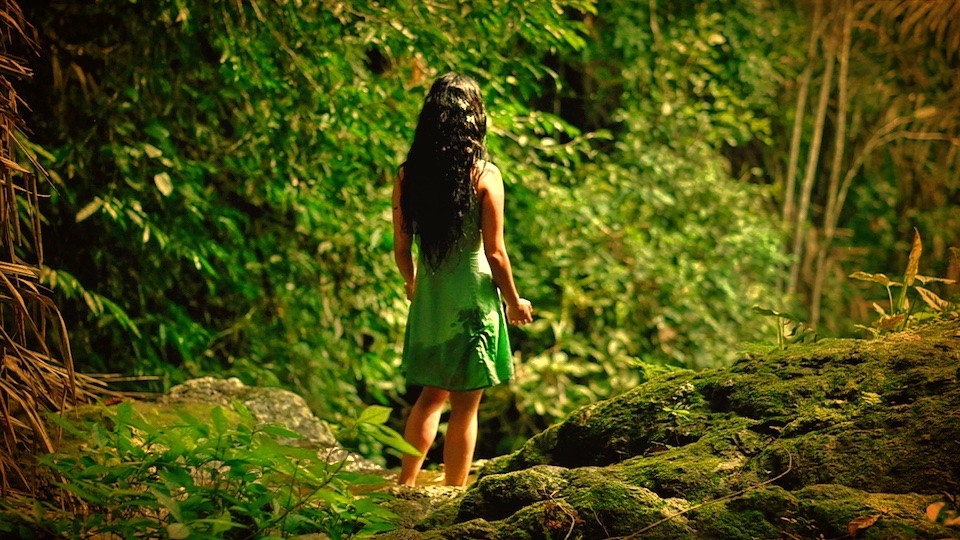 This is about one hour into the journey., standing at the top of a waterfall.
This is about one hour into the journey., standing at the top of a waterfall.
See the Movie
We recently made a short film about wild-harvested San Pedro, filmed in Ecuador under the influence of the great cactus itself. Yes, this is a different kind of film.
It?s currently in post-production. If you?re interested in seeing the final cut, there are two ways you can do it:
1. Send me an email: If you want to share your own experiences with San Pedro, or have questions about preparing or consuming it, feel free to send me an email. I?m interested in hearing about other people?s relationship with San Pedro, and I?m happy to help. In addition to (hopefully) responding to your email, I?ll also add you to the screening list for the film. Be forewarned that it may take me several weeks to properly respond?I check this email account once a month. Send me an email at [email protected] and be sure to write ?SAN PEDRO FILM? in the subject heading.
2. Use the sign-up form: If you just want to be put on the screening list, but don?t have any questions or San Pedro stories you wish to share, you can sign up on the form below. There is no cost to watch the film. Once it?s ready to launch, I will send you the Vimeo password. The reason we can?t simply upload the film to YouTube is that we?re also submitting it to film festivals, which often require that films have not yet been released to the general public.


